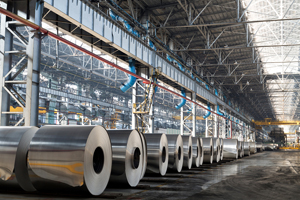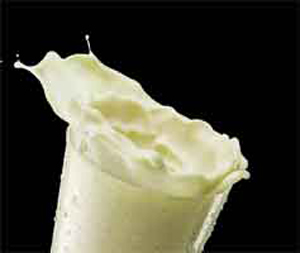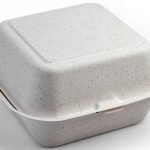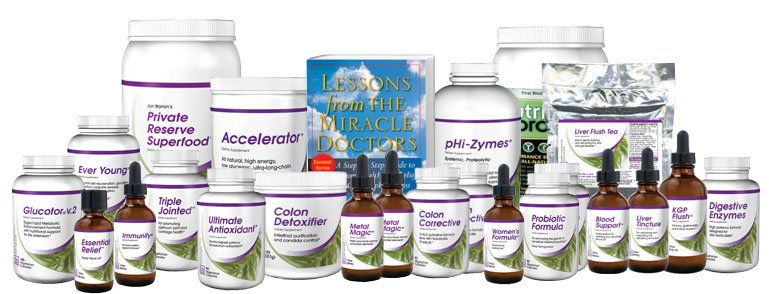It seems that heavy metal hysteria is reaching an all-time high in the alternative health community–especially since Mike Adams at Natural News published a newsletter attacking “high” levels of heavy metals in brown rice protein products–a newsletter that he quickly replaced with a softer version, but not before readers freaked out.
How justified is this hysteria? Are heavy metals as dangerous as claimed? How much of what’s being said is actually true? Is rice protein to be avoided? Is whey a better alternative than rice protein?
What are Heavy Metals?
Well, here’s the first surprise: there is no standard definition for the term “heavy metals”!
In fact, heavy metals are part of a loosely defined group of elements that exhibit metallic properties and that have a high atomic number or atomic weight and a specific gravity greater than 5.0. Beyond that, many different definitions have been proposed–some based on density, some on atomic number or atomic weight, and some on chemical properties–but none have stuck. The IUPAC (International Union of Pure and Applied Chemistry) actually issued a technical report in which they called the term heavy metal a “misinterpretation due to all of the contradictory definitions and its lack of a coherent scientific basis.”
And then there’s the question of toxicity…also not cut and dried.
Although excessive levels can be damaging to living organisms, human beings nevertheless require varying amounts of some “heavy metals” such as iron, cobalt, copper, manganese, molybdenum, and zinc to survive. Other heavy metals such as mercury, plutonium, and lead are toxic with no biological redeeming value, and their accumulation over time in the bodies of animals can cause serious illness.
In truth, when people in the alternative health community talk about “heavy metals” they are really talking about “toxic metals.” Unfortunately, even this term has no exact definition, and even worse, the issue of toxicity itself is not an absolute. Certain elements that are normally considered toxic are, for certain organisms, or under certain conditions, beneficial. Examples include vanadium, tungsten, and even cadmium. And for that matter, you would be hard pressed to find anyone who has anything nice to say about arsenic, and yet, as we will explore in more detail a bit later, small amounts of arsenic appear to be necessary for both growth and reproduction. And even tungsten, which was singled out in the Natural News report may hold a surprise or two itself.
A Gram of Heavy Metals is not Necessarily a Gram of Heavy Metals
 Gertrude Stein said, “A rose is a rose is a rose.” Well, that may be true of roses, but it’s not literally true when comparing the amounts of heavy metals in various items. As I explained back in 2011 when talking about Dr Oz’s big announcement concerning arsenic in apple juice, it matters a great deal as to whether or not the heavy metal is present in an organic or inorganic form. As the FDA itself states, “The inorganic forms of arsenic are the harmful forms, while the organic forms of arsenic are essentially harmless.” What the heck are they talking about? What does it mean? And in what alternate universe does the FDA promote the “virtues” of organic?
Gertrude Stein said, “A rose is a rose is a rose.” Well, that may be true of roses, but it’s not literally true when comparing the amounts of heavy metals in various items. As I explained back in 2011 when talking about Dr Oz’s big announcement concerning arsenic in apple juice, it matters a great deal as to whether or not the heavy metal is present in an organic or inorganic form. As the FDA itself states, “The inorganic forms of arsenic are the harmful forms, while the organic forms of arsenic are essentially harmless.” What the heck are they talking about? What does it mean? And in what alternate universe does the FDA promote the “virtues” of organic?
In order to understand the issue here, we need to define the word organic, but once again, that’s not as simple as it might seem. Most people probably think it means something like.
- Grown on an organic farm with fertilizers and/or pesticides that are strictly of animal or vegetable origin.
- Or raised without the use of drugs, hormones, or synthetic chemicals — as in organic chicken.
- Or maybe, as found in nature as opposed to being produced in a secret government lab.
And those are all valid definitions. However, they are not the only definitions. For example, the use of the word organic in the term “organic chemistry” has a very different meaning. The “organic” in organic chemistry refers to the branch of chemistry concerned with carbon compounds–other than a handful of compounds such as carbon monoxide and carbon dioxide. Originally, this definition was confined to compounds produced by living organisms but now extends to include man-made substances based on carbon, such as plastics.
And then there’s the definition of organic as the FDA is using it in their statement above. It has nothing to do with food and nothing to do with how things are grown. It is, however, connected to organic chemistry. To clarify, arsenic is (as are all heavy metals) a naturally occurring element widely distributed in the earth’s crust, in the oceans, and in most plant and animal matter. In the environment, arsenic is combined with oxygen, chlorine, and sulfur to form “inorganic” arsenic compounds. These are the highly toxic forms of arsenic that the FDA referred to and that are both poisonous and carcinogenic. But in animals and plants, arsenic combines with carbon and hydrogen to form “organic” arsenic compounds, which are far less toxic. Why are the organic forms less toxic?
The toxicity of arsenic primarily depends on its valence state — its proclivity for bonding with other molecules. Or to put it another way, the more a particular arsenic compound likes to bond, the more likely it is to lock onto human tissue and biological molecules, disrupting enzyme reactions and breaking down the high energy bonds in key molecules such as ATP. Most inorganic forms of arsenic are highly active and readily bond with molecules in the human body. In other words, the more likely it is that those forms are toxic. Organic arsenic molecules such as arsenobetaine and arsenocholine, on the other hand, have little tendency to bond with human tissue and are rapidly excreted in unchanged form in the urine — thus making them relatively nontoxic.
To put this in simple English: you’re far better off with a food that contains 50 ppb of organic arsenic than one that contains 10 ppb of inorganic arsenic. Unfortunately, you can’t tell which is which simply by comparing numbers in a table.
Beginning to make sense?
As mentioned earlier, the FDA recommends keeping arsenic levels in drinking water below 10 parts per billion. But in drinking water, we’re generally talking about inorganic arsenic absorbed from underground rocks. In fact, because arsenic is so omnipresent in the soil and ocean water, the average person consumes, on average, about 10-50 millionths of a gram of arsenic a day, with over two thirds of that coming from organic sources. And in truth, levels of 1,000 micrograms are not unusual following consumption of fish or mushrooms. But again, there is little danger from these sources because these are organic arsenic compounds and are essentially non-toxic.
And then there’s the issue of whether the heavy metal is “bound” or “unbound.” If the metal is in the soil where the plant grows, then it is incorporated into the interstitial tissue of the plant itself. As such, it is “bound” to the plant and not readily absorbed by the body and tends to pass through unabsorbed in the stool. On the other hand, if the heavy metal is environmental (that is, deposited on the plant as the result of air or rain pollution or as the result of pesticide spraying, then it is not part of the plant itself. It is unbound and is much more readily absorbed by the body after consumption. (Note: heavy metals found in animal foods–i.e. meat, fish, dairy–tend to be predominantly unbound since they are the result of the regular consumption of unbound heavy metals over the life of the animal.) How much of a difference does binding make? Bound lead has an absorption rate of about 20% and bound cadmium averages about a two to six percent absorption rate. This makes a vast difference when looking at test results for heavy metals in a rice protein VS drinking water, or dairy protein for that matter. The numbers may look the same, but in terms of what actually gets absorbed by the body, they are vastly different.
Consider the fact that the Japanese diet includes a high consumption of rice, a symbolic staple of the Japanese diet, and yet the Japanese rank number two in all the world for overall life expectancy, trailing only Monaco.1 “Life Expectancy by Country.” World Health Organization. (Accessed 10 Feb 2014.) http://apps.who.int/gho/data/node.main.688?lang=en Also, when it comes to Alzheimer’s (since brain damage is associated with heavy metal consumption), Japan also ranks well, placing near the bottom of the list (the further down you are on this list the better), with a mortality rate from Alzheimer’s about 1/10 that of the US.2 “World Health Rankings: Alzheimers/Dementia.” WorldHealthRankings. (Accessed 10 Feb 2014.) http://www.worldlifeexpectancy.com/cause-of-death/alzheimers-dementia/by-country/ Incidentally, Finland, Iceland, and the US top the list…and Monaco once again comes out best, placing at the very bottom of the list with a statistical zero percent incidence rate. It will be interesting to see what the future holds, as the consumption of rice in Japan has been dropping over the last several decades as bread, pasta, and other wheat-based products have grown in popularity. In any case, in the real world over the entire existence of modern man, the high consumption of rice with its organic and bound heavy metal content has had virtually no impact on either mortality or brain health. Keep in mind: that’s the real world, not theory.
Toxins in everything
 When we mentioned that heavy metals are present in virtually all the earth’s soil and ocean water, we touched on a second very, very important concept: it’s tough to avoid heavy metals. They are present in all the soils of the world and in all its oceans. Take arsenic again as an example. It’s actually the 20th most abundant element out of 90 naturally occurring elements. The earth itself contains an astounding 1.8 mg of arsenic per kilogram. That may not sound like a lot…until you consider that the earth weighs some 6.6 sextillion tons. Multiply that out, and it’s a whole lot of arsenic. And the ocean is even worse, with concentrations of arsenic reaching double that found on land, or about 3.7 mg per liter. What that means is that anything that grows on the land or lives in the ocean is going to contain arsenic, not to mention all of the other heavy metals — and anything that eats anything that grows on the land or lives in the ocean is going to pick up some of those heavy metals. Yes, the amounts will vary from location to location. Some areas are higher in one heavy metal and less in another. When testing, you need to do a full panel to get a complete story.
When we mentioned that heavy metals are present in virtually all the earth’s soil and ocean water, we touched on a second very, very important concept: it’s tough to avoid heavy metals. They are present in all the soils of the world and in all its oceans. Take arsenic again as an example. It’s actually the 20th most abundant element out of 90 naturally occurring elements. The earth itself contains an astounding 1.8 mg of arsenic per kilogram. That may not sound like a lot…until you consider that the earth weighs some 6.6 sextillion tons. Multiply that out, and it’s a whole lot of arsenic. And the ocean is even worse, with concentrations of arsenic reaching double that found on land, or about 3.7 mg per liter. What that means is that anything that grows on the land or lives in the ocean is going to contain arsenic, not to mention all of the other heavy metals — and anything that eats anything that grows on the land or lives in the ocean is going to pick up some of those heavy metals. Yes, the amounts will vary from location to location. Some areas are higher in one heavy metal and less in another. When testing, you need to do a full panel to get a complete story.
In other words, heavy metals are unavoidable in the diet. Everyone has some daily exposure to them because they are found everywhere — in water, soil, house dust, air, and food. And less is certanly better than more. But the good news is, as we’ve already discussed, that plants absorb a lot of this inorganic arsenic and convert it to organic forms or bind it to the plant matter itself. That means that the majority of our exposure to heavy metals, at least through plant based foods, is not usually considered harmful unless at extremely high levels consumed over a long period of time. Inorganic and unbound heavy metals that come from air pollution or are sprayed on foods as a pesticide or consumed in meat, fish, and dairy are a different story.
Toxic Heavy Metals Are Sometimes Essential Nutrients
And there’s another surprise in the equation: despite the fact that inorganic arsenic is a deadly poison, it is also an essential trace element in its organic form, essential for health and even life — although the necessary intake may be as low as 0.01 mg/day.
Studies of animals such as chickens, rats, goats and pigs show that small levels of organic arsenic are most likely necessary for proper growth and reproduction. In these studies, the main symptom of not getting enough arsenic was retarded growth and development.3 Uthus EO. (Chappell WR, Abernathy CO, and Cothern CR, eds.) “Arsenic essentiality and factors affecting its importance. In: Arsenic Exposure and Health.” Northwood: Science and Technology Letters, 199-208, 1994 Initial studies on arsenic deprivation in animals have shown that arsenic, in very small quantities, may have a physiologic role in the metabolism of the sulfur-containing amino acids, methionine and cysteine.4 Eric O. Uthus. “Arsenic essentiality: A role affecting methionine metabolism.” The Journal of Trace Elements in Experimental Medicine. Volume 16, Issue 4, pages 345–355, 2003. http://onlinelibrary.wiley.com/doi/10.1002/jtra.10044/abstract
And in fact, the same can be said to be true for several other “deadly” elements including vanadium, aluminum, and even strontium.5 S. Pors Nielsen. “The biological role of strontium.” Bone. Volume 35, Issue 3 , Pages 583-588, September 2004. http://www.thebonejournal.com/article/S8756-3282(04)00181-4/abstract (We’ll talk more about aluminum in a moment.) That said, you don’t want to consume more arsenic in any form (or any of the other “toxic” metals for that matter) than you have to. This becomes a problem when you consider that inorganic arsenic is used in great abundance in many countries in insecticides (outside the US), poisons, and weed killers. The same is true for most of the so called toxic heavy metals as they are heavily used in industry. This added exposure ups the ante. Essential trace elements are “essential” only when they enter the body in trace amounts and in their organic or bound forms.
Aluminum and Fluorine
 Aluminum, although not technically a heavy metal, is often considered one when it comes to health. It is one of the most abundant minerals on earth, and represents about 12% of the earth’s crust. And even more so than arsenic, it is found in large biological quantities in every plant, animal, and human. At higher levels, and in an inorganic form, aluminum is considered toxic and is associated with cognitive disorders such as dementia and Alzheimer’s disease. But at trace levels, organic or bound aluminum may be essential to life through its action on a small number of enzymes such as succinic dehydrogenase and d-aminolevulinate dehydratase. Succinic dehydrogenase6 B. L. Horecker, Elmer Stotz, and T. R. Hogness. “The Promoting Effect Of Aluminum, Chromium And The Rare Earths In The Succinic Dehydrogenase-Cytochrome System.” From the George Herbert Jones Chemical Laboratory of the University of Chicago, Chicago. Received for publication, November 28, 1938. http://www.jbc.org/content/128/1/251.full.pdf removes hydrogen from compounds so that they can then be oxidized (essential for the survival of infants), and d-aminolevulinate dehydratase is involved in porphyrin synthesis (essential for the manufacturing of hemoglobin in your blood). Foods naturally high in organic aluminum include peppermint, spearmint, and bananas.
Aluminum, although not technically a heavy metal, is often considered one when it comes to health. It is one of the most abundant minerals on earth, and represents about 12% of the earth’s crust. And even more so than arsenic, it is found in large biological quantities in every plant, animal, and human. At higher levels, and in an inorganic form, aluminum is considered toxic and is associated with cognitive disorders such as dementia and Alzheimer’s disease. But at trace levels, organic or bound aluminum may be essential to life through its action on a small number of enzymes such as succinic dehydrogenase and d-aminolevulinate dehydratase. Succinic dehydrogenase6 B. L. Horecker, Elmer Stotz, and T. R. Hogness. “The Promoting Effect Of Aluminum, Chromium And The Rare Earths In The Succinic Dehydrogenase-Cytochrome System.” From the George Herbert Jones Chemical Laboratory of the University of Chicago, Chicago. Received for publication, November 28, 1938. http://www.jbc.org/content/128/1/251.full.pdf removes hydrogen from compounds so that they can then be oxidized (essential for the survival of infants), and d-aminolevulinate dehydratase is involved in porphyrin synthesis (essential for the manufacturing of hemoglobin in your blood). Foods naturally high in organic aluminum include peppermint, spearmint, and bananas.
Fluorine is another “toxin” that is essential for health — but only at trace levels and only in its organic form. The organic form of fluorine combines with calcium (when in the presence of molybdenum) to form calcium fluorapatite, which is an essential component of healthy teeth and bones. Organic fluorine is present in tiny amounts in most foods, but is particularly abundant in tea and some seafood. Unfortunately, while the FDA is now asserting the health differences between organic and inorganic arsenic, they have not chosen to make the same distinction when it comes to fluorine, which means that many people are now saturated with inorganic fluoride in their toothpastes and drinking water. Unlike organic fluorine, inorganic fluoride does not contribute to bone and tooth health (it actually creates brittle bones and teeth) and readily causes fluoride poisoning at even very small doses.
And Then There’s Tungsten
In his article on brown rice protein, Mike Adams singled out tungsten as a heavy metal found in rice protein for special concern, but was hard pressed to delineate any specific health consequences from tungsten found in minute levels in food. In the end, the warning amounted to “be concerned just because it’s a heavy metal.” And there’s a reason for that lack of specificity. Quite simply, tungsten plays no biological role in multi-celled organisms (it is used by some bacteria), so any tungsten present in food, unless at extremely high levels or, more specifically inhaled, is harmless and quickly passes from the body. It is simply not part of any biological processes and is not used by the human body. In other words, its presence at low levels is biologically irrelevant.
The safe level of 50 ppb cited by Natural News is completely arbitrary. It is not based on any science. Tungsten is not even on the Prop 65 list, the most anally restrictive toxicity list out there.
That said, it’s certainly an interesting commentary that a study published in Free Radical Biology and Medicine found that small amounts of tungsten have proven to be effective in reducing the formation of arterial plaques. In control groups of mice fed a non-Western-type diet, very little arterial plaque formed. On the other hand, for mice fed a Western-type diet much more plaque was seem. But those levels of plaque were reduced when mice were treated with tungstate (a biologically active, tungsten-based compound). So tungsten turns out to be effective in preventing plaque formation. Not bad for a “heavy metal. ” But how can this be? How can a so called toxic metal have any possible health benefits? As it turns out, tungstate inhibits xanthine oxidase activity (something we talked about years ago when discussing homogenized milk) and so diminishes the formation of peroxide which plays a key role in plaque formation and fatty deposits. The effect of tungstate on plaque formation is dramatic.7 Schröder K, Vecchione C, Jung O, Schreiber JG, Shiri-Sverdlov R, van Gorp PJ, Busse R, Brandes RP. “Xanthine oxidase inhibitor tungsten prevents the development of atherosclerosis in ApoE knockout mice fed a Western-type diet.” Free Radic Biol Med. 2006 Nov 1;41(9):1353-60. Epub 2006 Apr 4. http://www.ncbi.nlm.nih.gov/pubmed/17023262
Again, it’s worth noting that no health problems have been associated with the low levels of tungsten found in food. In fact, it’s a good thing that there are no indications that it presents any sort of problem when found in food at normal levels since tungsten is, as are virtually all heavy metals, present in minute amounts in pretty much every food that comes from the sea or is grown on the land. Only hydroponically grown foods or foods in which it is processed out can avoid it. That said, it should be mentioned that hydroponically grown foods, although they tend to be “cleaner,” are also far more likely to be devoid of essential trace minerals. And when it comes to protein sources, whey, which processes out a number of heavy metals such as cadmium, lead, and tungsten, presents its own problems since it contains two of the most allergenic compounds found in food (beta-lactoglobulin and alpha-lactalbumin), in addition to being associated with the development of aminoacidemia.
And finally. It’s worth noting that the fact that whey is lower in toxic metals than rice protein is hardly surprising and means less than it might appear. It merely confirms everything we’ve been talking about. Since organic arsenic, the bound toxic metals such as cadmium, and biologically inert tungsten do the same thing in cows that they do in humans–pass through largely unabsorbed, they never make their way into the milk used to make whey. Again, your body does the same thing when consuming plant based proteins; it passes them through largely unabsorbed. Incidentally, the same thing is true of “healthy” heavy metals such as iron and calcium found in your food. You tend to get very low absorption of those too. The difference is that most of the healthy heavy metals are present in your food at levels thousands of times higher than you find with the toxic metals. With iron and calcium and zinc for that matter, you’re talking about daily intake in milligrams, as opposed to parts per billion. That’s a huge difference! Quite simply, low absorption combined with vastly larger quantities means you end up absorbing enough of the good heavy metals for health.
Conclusion: Rice Protein Is Safe
In the end, the issue isn’t really about overstated trace amounts of arsenic, lead, cadmium, mercury, and tungsten in rice protein, or even strontium 90 and cesium in whey. As we’ve seen, the story on heavy metals can’t be reduced to a simplistic media headline or even a simple listing of parts per billion in a table.
 Far from being toxic, at low trace levels, many heavy metals are essential.
Far from being toxic, at low trace levels, many heavy metals are essential.- There is a huge difference in how the organic forms and the inorganic forms of all these elements behave in the body. As the FDA says for arsenic, “Organic good. Inorganic bad.”
- Bound and unbound heavy metals are also absorbed at very different rates in the human body despite reading as identical in a lab test. In other words, a gram is not a gram is not necessarily a gram.
- And even if you want to totally avoid them, you can’t. It’s impossible. They’re everywhere — in every plant, in every animal. The levels vary, of course, from plant to plant and from animal to animal. One may be higher in lead, another in cesium. You just want to minimize your exposure to the inorganic and unbound forms.
- And if you’re concerned about them, you can always do a periodic heavy metal detox. Look for a formula based on cilantro and chlorella. Together, these herbs create a powerful oral chelation formula.
-
- Incidentally, Natural News, almost a year ago to the day, took on the issue of heavy metals in chlorella. If you think about this for just a moment, it shouldn’t be that surprising. Chelators such as chlorella, clay, and humic/fulvic acid, by definition, are going to “pick up” heavy metals in their natural environment. They wouldn’t be very much use as chelators if they didn’t. But that doesn’t mean they will then release those heavy metals back into your body when you consume them. In fact, quite the opposite happens. They tightly hold onto the heavy metals they have already captured (releasing none into your body) and then proceed to capture those heavy metals floating around in your body. Think of it like a sponge that has a little water already in it. When you drop that sponge in a bowl of water, it’s not going to add that water to the bowl, but rather it’s going to suck the water up in the bowl. Obviously, the lower the heavy metal content in the chelator when you ingest it, the more it can remove from your body, but that’s a story for another day.
- In summary, don’t have a knee jerk reaction to the label “heavy metals.” (Both calcium and iron are technically heavy metals.) Yes, obviously, when it comes to “toxic” heavy metals, less is better than more. But the issue is far more nuanced than a simple label–or even numbers on a chart for that matter. You have to factor in whether or not the element actually has any “proven” toxicity (tungsten has no demonstrated toxicity), whether it’s organic or inorganic (organic arsenic is virtually ignored by the body), and whether it’s bound or unbound (bound cadmium has only 2-6% absorbability).
You should feel safe using any quality rice protein product from companies you know and trust in regard to heavy metals. (I’d have less confidence in low cost generic brands where ingredient sourcing is likely to be an issue.) That said, there is no historical indication of any kind that rice products from anywhere in the world will shorten your life expectancy or harm your brain in any way. In fact, as we’ve discussed already, the statistical evidence over the centuries is quite the contrary. The bottom line is that brown rice protein combined with yellow pea protein is still my personal choice as a protein supplement over both whey and soy. I like hemp protein too, but the taste, at least so far, is much less user friendly.

Editor’s Note: You might find the comment below and Jon’s detailed reply informative.
References
| ↑1 | “Life Expectancy by Country.” World Health Organization. (Accessed 10 Feb 2014.) http://apps.who.int/gho/data/node.main.688?lang=en |
|---|---|
| ↑2 | “World Health Rankings: Alzheimers/Dementia.” WorldHealthRankings. (Accessed 10 Feb 2014.) http://www.worldlifeexpectancy.com/cause-of-death/alzheimers-dementia/by-country/ |
| ↑3 | Uthus EO. (Chappell WR, Abernathy CO, and Cothern CR, eds.) “Arsenic essentiality and factors affecting its importance. In: Arsenic Exposure and Health.” Northwood: Science and Technology Letters, 199-208, 1994 |
| ↑4 | Eric O. Uthus. “Arsenic essentiality: A role affecting methionine metabolism.” The Journal of Trace Elements in Experimental Medicine. Volume 16, Issue 4, pages 345–355, 2003. http://onlinelibrary.wiley.com/doi/10.1002/jtra.10044/abstract |
| ↑5 | S. Pors Nielsen. “The biological role of strontium.” Bone. Volume 35, Issue 3 , Pages 583-588, September 2004. http://www.thebonejournal.com/article/S8756-3282(04)00181-4/abstract |
| ↑6 | B. L. Horecker, Elmer Stotz, and T. R. Hogness. “The Promoting Effect Of Aluminum, Chromium And The Rare Earths In The Succinic Dehydrogenase-Cytochrome System.” From the George Herbert Jones Chemical Laboratory of the University of Chicago, Chicago. Received for publication, November 28, 1938. http://www.jbc.org/content/128/1/251.full.pdf |
| ↑7 | Schröder K, Vecchione C, Jung O, Schreiber JG, Shiri-Sverdlov R, van Gorp PJ, Busse R, Brandes RP. “Xanthine oxidase inhibitor tungsten prevents the development of atherosclerosis in ApoE knockout mice fed a Western-type diet.” Free Radic Biol Med. 2006 Nov 1;41(9):1353-60. Epub 2006 Apr 4. http://www.ncbi.nlm.nih.gov/pubmed/17023262 |












Thank you for being the voice
Thank you for being the voice of reason in the chaos of wellness gurus… I find it refreshing and mind calming that you have not fallen in with the ‘pyramid marketing’ approach of all those connected with each other in the circle of health and wellness.
You remain my most trusted source in natural healing.
Thank you for all you do…
Elle
Great article on heavy metals
Great article on heavy metals. I’ve been reading alot about fulvic acid. It contains a bunch of trace minerals and amino acids. I did see a msds sheet on a fulvic acid product. It had 2000 mg of organic aluminum/ liter. Should I be concerned?
Thank you
Sam
The simple answer is no. Now
The simple answer is no. Now for the explanation. First, at least with any formulas that Jon Barron produces, is that every batch of every product is run through heavy metal testing before and after manufacturing to make sure that heavy metals concentrations are all within acceptable levels. That said, yes, any natural chelator is going to be higher in heavy metals than a hydroponically grown carrot because it’s going to be doing in the ground what it does in your body—grabbing onto heavy metals that are around it. But, and this is the absolute key point, it doesn’t release those heavy metals into your body when you consume it. Rather, it continues to do what it did in the ground, chelate heavy metals, but now with the ones that are in your body. And it’s not just fulvic acid. The same is true for montmorillonite and bentonite clay that chelate heavy metals from you intestinal tract. The bottom line is that although fulvic acid will have slightly elevated levels of heavy metals (and only slightly if you get the good stuff), they don’t release those metals into your body but, rather, work to lower the levels that are already in your body. Make sense?
Thank you for being the voice
Thank you for being the voice of reason in the chaos of wellness gurus… I find it refreshing and mind calming that you have not fallen in with the ‘pyramid marketing’ approach of all those connected with each other in the circle of health and wellness.
You remain my most trusted source in natural healing.
Thank you for all you do…
Elle
No comment. Or yes: you need
No comment. Or yes: you need more education for sure.
Tash
Dear Jon,
Dear Jon,
I have enjoyed your informative and factual articles for many years, and hope they continue for many more.
Heavy metal intoxication, if fact all toxicity in humans is a complex situation. An individual can accumulate significant amounts of intoxicants over their lifetime and sequester them in tissues, providing little health risk. Others, particularly the young, can be exposed in utero or during early development with trace levels of heavy metals, producing significant compromise in health.
Two patients with similar exposure may have large differences in the level of interference produced based on their genetic response to the exposure. This makes it difficult to ascertain who is intoxicated, and therefore, who should be treated. Testing for the level of intoxicant is inadequate, as levels of intoxicants do not equate to manifestations. Currently, a reasonable method of evaluating if toxic metals or fat soluble environmental pollutants are disrupting homeostasis is by measuring porphryrins in the urine. These breakdown products
of hemoglobin provide a functional measurement of the interference these toxic substances can produce and allow an indication when these stressors have been remedied.
Again, my best to you and thank you for your efforts.
Interesting article on Adam’s
Interesting article on Adam’s heavy metals controversy. However, he later tested several varieties of Lundberg’s rice products and found they have virtually no heavy metals. So the fact that some do and usually those sourced from Asia, means that it is possible to grow rice that doesn’t contain those metals. Frankly, I see no need to consume rice protein as there are better, more biologically appropriate proteins that have neither heavy metals nor certain other antinutrients. I can see why those purveyors of rice protein products would be defensive of some “naturally occurring” heavy metals, though.
This is actually a great
This is actually a great comment and brings up a number of important issues. Let’s deal with them here, and that way I don’t have to devote an entire newsletter to them.
First, you mention that purveyors of rice protein “would be defensive.” So, in terms of full disclosure, let me point out that of the 24 formulas that I personally am invested in, two of them incorporate rice protein. Both of those ALREADY fall within in Natural News’ guidelines for heavy metals that are to take effect in 2015. The only metal that does not is tungsten, which is not considered toxic. Even Natural News acknowledged that no toxicity has been shown for it yet. Their concern is what “might be” discovered for it in the future. But that’s like saying you should be concerned about what “might be” discovered for calcium, iron, copper, and zinc–all of which are heavy metals too. The bottom line, since my formulas already fall within the recommended guidelines, I have no need to be “defensive” personally. My role is merely to make an honest case. That said, Natural News should also disclose that they have skin in the game too as they are selling protein powders that compete with rice proteins.
As to other “biologically appropriate” proteins being available, keep in mind that they all have their own issues. Soy, egg, and whey are all high in allergens, which is the primary reason I favor rice and pea proteins over them. They also come with their own toxicity issues, with whey concentrating radioactivity, for example–something to be concerned about if you take Natural News’ statements on Fukushima contamination seriously. Hemp is good, but it has its own heavy metal issues as it is grown in the ground and is watered from the sky.
It should also be mentioned that all of the numbers that Natural News cites come from their own testing. But they are not a GMP or GLP testing facility. They are just some people who bought equipment and are having a great time running products through it. No problem with that in principle. But keep in mind that there is a reason for the hugely expensive hoops that GMP testing facilities are required to jump through — and that’s to ensure continual proper calibration of their equipment, the elimination of any chance of cross contamination, and making sure that you have fully trained, certified personnel running the equipment who are capable of properly reading and evaluating the results. Without that, the best you can say is that the numbers Natural News comes up with are not definitive; at best, they are merely indicative. Why would Natural News choose to do this? Because it costs them nothing. Running multiple tests through GMP labs is not inexpensive. Running things through your own testing equipment in a non-certified facility costs nothing. But this is one case where you most likely get what you pay for. That’s why I require for every batch of all my formulas that they be run through GMP testing. Most good companies do the same.
Now let’s talk about the Lundberg testing that was the focus of your comment. Different tests on the same batch always vary–and that’s with GMP testing. Why does this matter? Because rice only has a protein content of 3%. The rice protein most people use in their protein powders has a protein content of 80%. That’s a 26:1 multiple. Now, if you multiply even the most infintessimal variance in the Lundberg numbers (remember, we’re talking parts per billion) by 26 to get a real apples to apples comparison, the heavy metal levels come out much the same. The thing that I find very disturbing is that Natural News knows this and still chose to make the comparison look like a 1:1. That’s just not right; it’s misleading. As I said, they know better. One can only wonder why they chose to do so. Since it’s not my goal to get into a pissing contest in terms of numbers, I’m not going to publish any GMP numbers on heavy metals in the Lundberg rice products. But let’s take one number from the Lundberg site. On their own site, they state that their rice tests at 73 PPB of inorganic arsenic. That translates to .073 PPM. My Nutribody protein, which incorporates a large amount of rice protein, tests at .053 PPM. In other words, based on their own numbers, the Lundberg rice tests 38% higher–and that’s at 3% protein VS 80% protein. Look, Lundberg is a good company and makes a fine product. My problem is not with Lundberg but with the way Natural News cherry picked numbers and claimed that they had near-zero heavy metals VS rice protein products. It’s also interesting that Natural News didn’t include arsenic in their comparison.
In addition, I think it’s important for readers of Natural News to remember things that are said from one article to the next. With that in mind, I remind you of their Fukushima update of July 14, 2013. And I quote: “Essentially, the entire West Coast food supply of North America will be contaminated with radiation for unlimited generations…Consider the water supply. Not only does it provide drinking water for humans and animals, but it also irrigates crops. When the supply is contaminated, it influences everything.”
Based on that report, why in the world would you want to use California grown rice as the source for you rice protein? Of course, this runs 180 degrees counter to Natural News’ current argument that California grown rice is the way to go. You can’t have it both ways.
Look, my hat’s off to Mike Adams and Natural News. They do some great work and expose many things that need to be exposed. They repeatedly put themselves on the line for all of us in the Natural Health community. But sometimes, just sometimes, they are a bit more alarmist than factual. I’m thinking this might be one of those times.
Jon, as always you make good
Jon, as always you make good points. However, Garden of Life did not deny the accuracy of Mike Adams’ testing, as I would have expected, and agreed to be in compliance with new heavy metals limits by June 2015. This raises the question of where they have been sourcing their rice protein, and if they will ever reveal the results of any independent testing they had done on their products. Interesting to note that ConsumerLab did not publish any results for Garden of Life proteins, which means they likely failed ConsumerLabs testing. (CL hides the results if manufacturers pay a fee, which Garden of Life does.) Since Garden of Life tested at the highest level for heavy metal contamination in the Natural News lab, the cat’s out of the bag. Garden of Life is doing damage control, but this is a major loss of face for them.
Wow, Thanks! The reason I
Wow, Thanks! The reason I found this excellent thread commentary was noticing that my Garden of Life, Raw Calcium, Magnesium, Vitamins D3 K2 Mk-7 supplement has 3.8 mg of Strontium per 4 capsule serving [– after hearing over and over that Strontium is one of the main harmful heavy metals they’ve been spraying us with, in increasing amounts via chemtrails – so I’m thinking, “Who owns this Garden of Life — Monsanto or Bayer, and probably all the ingredients in our vitamin/mineral supplements are probably sourced from GMO plants unless the jar says Organic or at least non-GMO. Plus even Organic is not that helpful unless its grown on soil reliably certified to be enriched as good as hunza soil is, which I know about from studying about the basis of Sunrider’s daily recommended nutrients (& tried it for about 1yr), as well as from reading the doctorate thesis book of the personal physician of a recent King of the UK, which is out of print (and which I lent out and no longer have).”], and so I Googled: Is Strontium A Highly Toxic Heavy Metal That Has No Place In A Vitamin – Google Search and found this excellent commentary. Anyway, Thanks again! I believe in the dramatic clinical tests of nutrients that are highly successful in treating various diseases and conditions, those nutrients are derived from plants grown organically from organic seed in soil that has been enriched to equal to Hunza quality soil, and they’re not letting us know that. I believe that because of the book that I afore mentioned, which I just happened upon, when going by a book sale from an “out of print” used book store, and happened to pick up the book by the individual who was to become the personal head physician of the king of the United Kingdom, who did his thesis research in India, which was at the time, still a colony of The UK, and he stated he did a study of the diets of all the cast levels of Indian society, by having groups of white mice to represent each cast, which were given the exact diets of that cast, the worst being the casts with the most contact with the British, who lived the coastal cities and had incorporated many of the processed foods imported by the British to India, such as highly refined wheat and highly refined sugar. These casts had started to experience the diseases the British commonly got with comparable percentages. Leading away from the coastal cities where casts had less and less incorporation of highly processed foods introduced by the British, there were less and less occurrences of various diseases, right up to the Hunzas, who got no diseases whatsoever, not even colds, and likewise the Hunza mice got no diseases whatsoever, not even colds. The Hunza people lived to be up to 160 years old, and were an intelligent amiable people, and the Hunza mice were likewise the most intelligent and friendliest of all the groups of mice in his test subjects, and he explained that all the Hunza food was grown on their terrace farming high up in the Himalayas, and that the soil was enriched by the silt deposited from the glacier water which was where they had little trenches dug from to water all their terrace crops. Dr. Chen of Sunrider had evidently read this book in Taiwan also, and for his doctorate thesis in nutrition. in Taiwan, he grew 2 very large gardens side by side, of a large selection of organic vegetable seeds, growing both with identical organic methods, the only difference being that he added the nutrients & minerals to one of the garden soils to make it equivalent to Hunza terrace crop soil, and added nothing to the other plot. All the vegetables from the Hunza type enriched soil were much bigger, with deeper color and taste than those grown on the regular soil, with much more potent nutrients, and he also marveled at the huge difference, in that insects heavily attached the crops grown on the non Hunza enriched soil, but didn’t touch the crops next to that garden, grown in the Hunza enriched soil. He said it gave new meaning to the observation that animals in the wild, take out the unfit, while leaving the fit alone. Therefore, he determined to make nutritional supplements from crops all grown on soil enriched to the Hunza standard. I tried one capsule of his product called “Ease” which was described as for having too much energy and not being able to sleep, which was so effective, it was comparable to taking a sleeping pill, but none of his products had any drugs in them, just raw, organic nutrients, freeze/dried to be preserved in the alive state, to feed the body’s 5 systems equally, so it can function properly. That was in 1991-1992. My wonderful mother had passed away from breast cancer in 1988, after which, I started studying nutrition taking an average of 1 seminar on the subject per month for 10 solid years and continuing to research via the internet and try various products encouraged by those studies. Since then, I haven’t tried a single thing that I could feel the slightest benefit from, other than definitely feeling some energy from liquid B12 in the amount of about 2,000 mcgs several times a day, and the fact that taking 8 1000 mg tablets of store brand vitamin C with Rose Hips every 6 hours with food at the 1st tiny sign of a cold, prevented me from ever catching a cold or flu for 25+ years. Then, when I learned from my friend May Lee, who taught me about the foundation of nutrition, as well as several advanced spiritual teachings, including that she also hadn’t gotten a cold or flu in the same amount of time, not by taking vitamin C, but because super hating colds like most people, she simply “Refused to get a cold”. I decided soon after, that if she could do that, so could I, and truly hating colds, I determined to never get another cold from then and have been able to not get another cold since, even without taking any vitamin C. Although taking vitamin C in ultra large doses has been proven to be able to cure almost everything that ails you by some advanced clinics in Europe. While determining to expand the consciousness to not suffer any malady by simply refusing to with the power of your mind is obviously the best choice, and believing we would all prefer that anything we actually produce by hand would also be best if utilizing the highest standards we are aware of. Expanding the determination and belief we can accomplish those things with our minds is probably the main factor required to reach optimal health along with exercise, as well as quickly expanding that awareness to enough people that everyone is able to pick it up as in the true scientific story of “The Hundredth Monkey”. Otherwise, we’re just talking about endless dis-information taking up everyone’s time and focus, so that none of us ever get that close to living ideal lives we’re all meant to live. If heard that all civilizations and lifeforms are doomed to destroy themselves in misery and never evolve unless they learn how to transmute anything and make everything they wood like, with their minds. It does seem like it would be easier to expand determining never to get a cold to that extent, if having only organic foods and supplements grown organically on rich soil, with unpolluted water, air and earth, and a few other beautiful, healthy, quality items in our possession would make that process a lot easier and forth com
That’s an interesting comment
That’s an interesting comment. Can you explain how you know that ConsumerLab hides negative results from companies that pay them? I wouldn’t have thought some trouble would have come from that years ago.
And how can you tell that GOL does pay CL? I’m looking at a GOL brand – RAW Calcium – and it doesn’t have a CL certification on it.
Your information about
Your information about Chlorella is inaccurate. The cysteine content of Chlorella forms a SINGLE sulfhydryl (thiol) bond with heavy metals such as mercury, and thus can very easily ‘drop’ it’s cargo within the body, due to competition from other thiols already present within the body, potentially causing significant damage (and redistribution) as it does so.
Read Andrew Hall Cutler’s ‘Amalgam Illness: Diagnosis and Treatment’ for more on this.
DMPS, DMSA, and Alpha Lipoic Acid all form a DOUBLE sulhydryl bond, and are thus substantially safer for mercury detox (and some other heavy metals, with variation according to the exact chemistry of the chosen chelator)
Owing to its aforementioned single-thiol-bond properties, Chlorella can actually cause vastly MORE problems for metal-toxic patients, rather than reducing their metal intoxication symptoms.
It’s an interesting theory,
It’s an interesting theory, but I’m not sure it’s supported by the facts on the ground. Numerous studies indicate that chlorella absolutely removes heavy metals from the body. For example:
It’s probably worth noting that Dietrich Klinghardt M.D., Ph.D. of the Jean Piaget Department at the University of Geneva, Switzerland, who is considered an expert in mercury toxicity, makes chlorella the cornerstone of his protocol for removing mercury from the body – a protocol used by physicians and dentists around the world. http://www.chelationstory.com/chelation_with_chlorella_and_cilantro.htm
And finally, simple measurements at water treatment plants clearly show that the levels of toxic metals are drastically reduced after exposure to chlorella in holding tanks, which is why chlorella is used by those same plants to remove heavy metals from their municipal water supplies.
That said, in my formulations that incorporate chlorella, I use only the cleanest organic sources of chlorella available.
One method of getting rid of
One method of getting rid of toxins is to do The Purification Program. Read ‘Clear Body, Clear Mind’ by L. Ron Hubbard.
The program gets rid of toxins that lodge in the fatty tissues of the body, as well as accumulated radiation.
Jon, thanks for elaborating
Jon, thanks for elaborating on this subject in a clear yet scientific way. No one bothers explaining these things, which is why I’m happy you’ve taken it to task! Another topic I would love to have clearer is the subject of msg in soy – Specifically, if Bragg Liquid Aminos are okay – while they don’t have “added msg,” they do mention they have a small amount that comes about from how the product is made. I just bought a bottle and can’t seem to get any joy from it now, as I’m bothered that it’s putting msg into my diet. I really would appreciate you breaking it down. Thanks.
How does Jon manage to make
How does Jon manage to make such a detailed and understandable assessment of such a complex issue !
(Perhaps we are fortunate he gave up Medicine a long way back? I myself am – thankfully – a retired medic.)
Much appreciated.
Much appreciated.
“No comment. Or yes: you need more education for sure.” Was ist das?
I’ve been a subscriber to NN for many years. Mike apparently has a dubious history involving Intelligence Agencies. This may cover all bases. I’ve been wondering how Mike finds the time for all these rather demanding endeavors. His last involved an expertise in computer programming, which he had of course. Now he is inventor and chemist. But I do appreciate his exposing Adya Clarity. This stuff burned a hole in my shirt!!!
I LOVED your book “Lessons
I LOVED your book “Lessons From the Miracle Doctors”, Jon: I read it from cover to cover while I was visiting a friend of mine last Summer, & I intend to purchase my own copy sometime soon. The above article was FASCINATING to me & solid PROOF that even in the world of Organic, NON GMO, ways of thinking opinions can & do vary considerably. That being said when I hear from Mike Adams that certain companies-EVEN CERTAIN COMPANIES THAT TOUT THEMSELVES AS BEING ONLY PRO ORGANIC, NON GMO, etc who make similar products still have products with vastly different levels of heavy metal contamination depending on which company made the product my common sense tells me that if one company can keep it’s product virtually heavy metal free or at least very low in heavy metal contamination then any company making & selling a similar product can & SHOULD TRY VERY HARD TO do what that other company 100% PROVED can be done! (THE END)
Thank you for the chemistry
Thank you for the chemistry lesson. This has made me more aware of what our world is made of. Our food is being destroyed by greedy producers for mega $ numbers. I think we all need to be more informed of our food supply. If contamination continues from use of pesticides, etc we certainly won’t be living longer – but lesser time. Most of our illnesses/diseases I feel are being created by our environmental problems and contributed by the use of additives, preservatives, “natural ingredients” AND LOTS OF DRUGS PRESCRIBED UNNECESSARILY.
As a consumer of natural
As a consumer of natural health supplements I would like to know if there are heavy metals present in what I am buying as I would prefer to limit my exposure. I understand that there is a difference between inorganic and organic and one is considered safer than the other but would it not be better that growers and suppliers tried to do better from their end so that the benefit passes down to my end. Perhaps we are doomed in the city to exposure to toxins and heavy metals from fresh food , the air and god knows what but where it involves a health supplement I feel a bit ripped off.
Jon would agree absolutely-
Jon would agree absolutely–with the following caveats as expressed in the article:
So, if you’re willing to grant these points of understanding, Jon would absolutely agree that when it comes to toxic metals, less is better and that growers and suppliers should continually try and improve the quality of their products.
Hope that helps.
When I heard and read about
When I heard and read about Mike Adams heavy metal testing, the first thing I noticed is that he never discussed the terms organic or inorganic minerals. That immediately made me suspect of his information.
In a way that everyone can understand and just using common sense . . . If we could eat dirt and survive we would. Why bother going to all the expense and work of growing food, if we could just eat dirt. Basically the inorganic minerals are metals in dirt and rock and can be considered heavy or toxic. Organic minerals are not metals (we don’t mine corn to get aluminum, etc.) and are in the foods grown in the earth. Humans require essential minerals in organic form at trace levels. That is the miracle of life and God. Plants use inorganic minerals in dirt to form organic minerals in trace amounts in our foods, just what we need. So in essence we really need heavy metals and they make nice cars. 🙂
Thank you, Jon. As always,
Thank you, Jon. As always, your articles are written in-depth but not beyond the depth of your readers. You remove the hype from everything and put things into perspectives that reasonable, logical and open-minded people without an agenda appreciate. A rare thing these days. I look forward to receiving your articles.
Regards,
Tracey
You make the case that rice
You make the case that rice and rice products are OK because organic arsenic is OK and INorganic arsenic is the “bad” one.
The only problem is that rice is blamed for having too much INorganic arsenic, not for having too much organic arsenic. A simple google search shows that very quickly. Arsenic in rice is a concern because it is INorganic.
So this article, as clever as it may seem, actually misses the point.
Actually, the issue of
Actually, the issue of organic and inorganic is only one of several issues brought up in the article. In the reports that you are citing, the reference is to the valence state of the lead. And yes, Jon discusses that as one of several points. The more relevant issue is the one concerning bound and unbound lead—whether the lead is bound to plant tissue or not. As the article says, bound lead—even if it’s inorganic–has an absorption rate of about 20% and bound cadmium averages about a two to six percent absorption rate. This makes a vast difference when looking at test results for heavy metals in a rice protein VS drinking water, or dairy protein for that matter. The numbers may look the same, but in terms of what actually gets absorbed by the body, they are vastly different.
So yes, if you take one point in the article out of context, then it is merely clever. But if you read the entire article, it tells a different story.
Hope that helps.